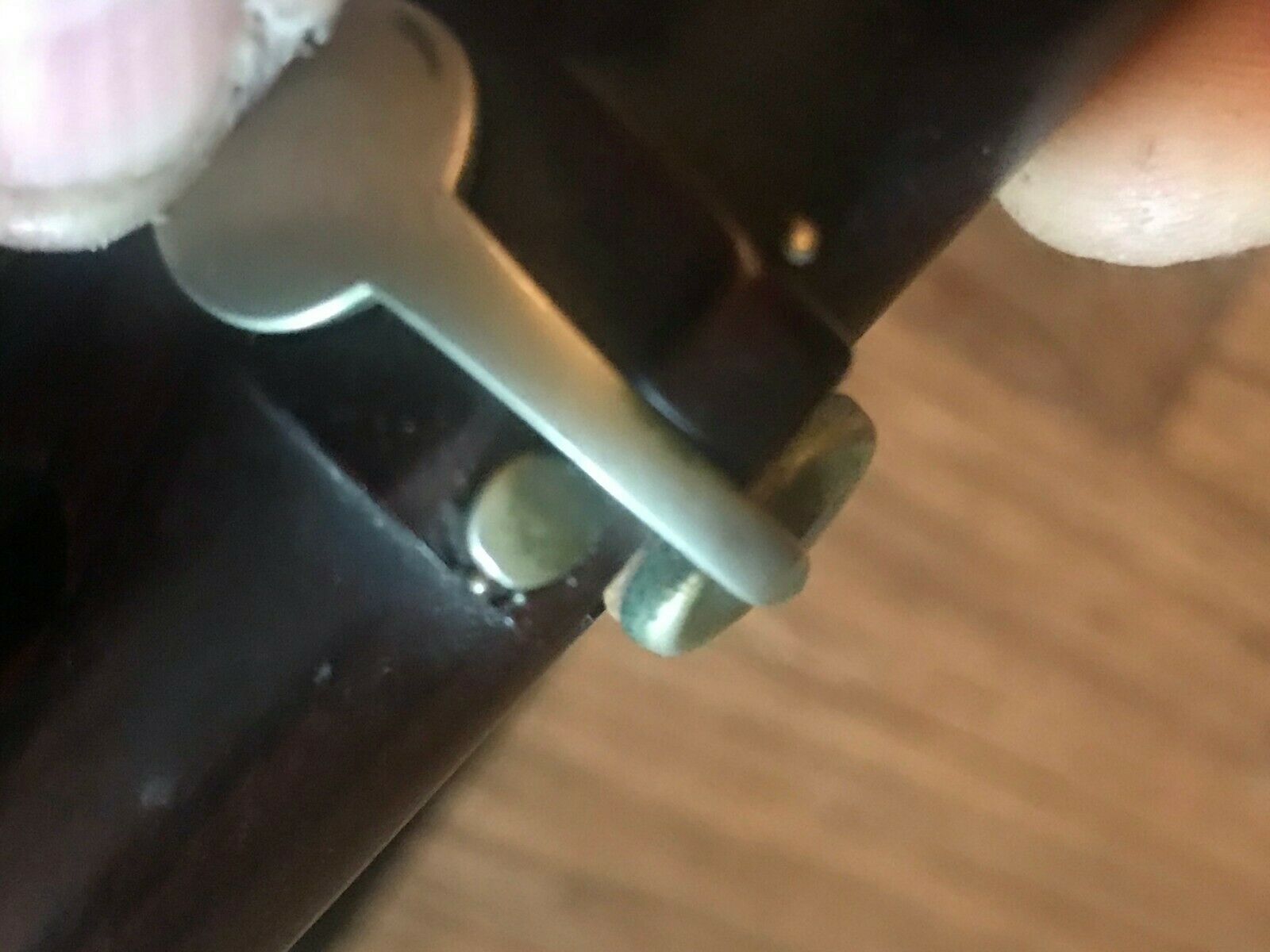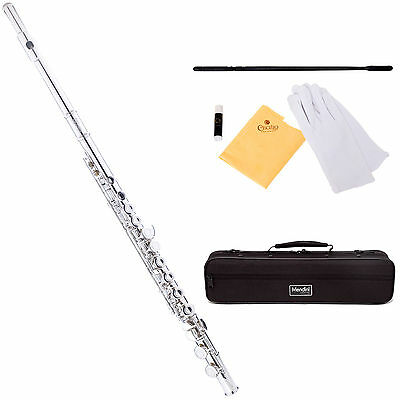-40%
William Hall & S0N 1847 6 Key Flute Cocus-wood EXCELLENT 1st Flute/Year COD Only
$ 1504.8
- Description
- Size Guide
Description
In excellent shape. This 1847 Hall flute predates his first business address but confirms he did set up shop in 1847 prior to his first Broadway location in NYC in 1848.The name on the upper joint is readable as, foot joint and head joint stamps are very worn with remnant letters:
WILLIAN HALL & SON
NEW YORK
GERMAN SILVER.
The name on the foot joint has been worn away to near visibility by polishing, but visible with an overhead visor and proper light; partial and faded letters of WILLIAM HALL, NEW YORK, and very little left of the third line (GERMAN SILVER).There is also a very faded stamping on the head joint between the blow hole and ferrule.
With the price that players pay for modern flutes, and the market for antiques, 1,000 may be an over the top price. However, in this case is an investment for any collector, museum, of potential benefactor who can have their name immortalized in the exhibit. As a playing instrument for period music it makes a convincing voice in period music. And for Irish music it will have a spirit. I am leaving to door open for offers, hopefully higher.
This is a historically important instrument. I would say the value of it being the only pre- 1848 Hall flute ever found, and likely one of the first, if not the first, and a 6 key in most probably cocuswood very rare for Hall would conservatively price this flute in resorted condition at 3,000 to 4000 dollars.
READ ON to the DESCRIPTION:
This flute is very unusual un a number of ways. The head joint lining is brass and the barrel lining is brass with a tin German Silver outer layer.
But, it has 6 keys with a conical bore, and is a tight straight grained cocus wood. It is much harder than rosewood which I have worked extensively with clarinet repair and guitar building. Hardness compared to high density gabon Ebony, and not ebony.
The boor is conical - somewhat polycylindrical at the foot.
The overall length is 24 inches
The sounding length from the centre of the blow hole to end of foot joint is 23-1/2 inches.
The head joint is fully sleeved and parallel measuring 19 millimeters.
The tuning barrel is bi-metal sleeved and also 19 millimeters.
The top joint is tapered from 19 millimeters to 14 millimeters.
The middle joint is 14 millimeters to 12 millimeters
The foot joint
is 12 millimeters to 14 millimeters.
The following defects are noted:
The head joint has a has a crack about 7
thousandths
of an in on the
opposite
side of the blow hole. An E-Z fill. If not it will not leak.
There is a small chip of wood missing from the top of the G# Key saddle that is not down to the pin
There is an 1800s method repair on the F key saddle that is well done and hold the pin well.
Please see the composite photo.
The Stamping: Great care was taken to expose what remains of the stamping in the Head, Top, and Foot joints. My thoughts lead to a combination of the following: The first stamps lacked the depth to form a clear stamp; Hall was over cautions and did not want to risk too much pressure; the players or repairer ragged the the instrument and tried to eliminate scotches that built up over the years, and it was refinished as it does have a sheen to it. None the less it is what is is as described and forensics would certainly prove it.
Also noted that this is very rare as it has none of the improvements and construction developed after during and after1848, yet not like what his former partnership with First, Hall & Pond, and has certain improvements based on their designs as well as some sturdy and stylish features.
POSITIVE ATTRIBUTES
No shrinkage of evidence of ring compression or packing, aside from the head joint crack.
Keys and pins as well as tone holes are all original.
No tenon chips or mortise (socket) issues, even in the micro exam.
No play in the keys..
Original threaded crown in good order
I will be happy to relay any photographs in forensic detail, as if these aren't enough. There is yet to be an example of a cocuswood model in any museum. The Address under the NEW YORK tells it all. His first location. The hardness of the cocus wood and shallow of the stamp means this may be one of (if not) his very first flutes.
Here is what this flute teaches us. We know that prior to setting up shop on Broadway in New York City, having left
Firth, Hall, & Pond, New York, 1847
there was an address where he prepared set up shop in 1847 before moving his shop in 1848. all records indicate that William Hall & Sone stamped their flutes:
WILLIAM HALL & SON
239 BROADWAY
N.YORK
This flute is stamped"
WILLIAM HALL & SON
NEW YORK
GERMAN SILVER
Here are the historical facts/exhibits:
National Music Museum
The University of South Dakota
414 East Clark Street
Vermillion, SD 57069
EARL;IEST Example: Flute in C by William Hall & Son, New York, ca. 1848-1849. Conical. Five sections. Stamped on upper joint:
WILLIAM HALL & SON / 239 BROADWAY / N-YORK
; stamped on head joint, tuning slide, heart piece, and foot joint:
WILLIAM HALL & SON / N-YORK
. Rosewood with silver ferrules. Eight silver keys. Total length, 26-1/4" (666 mm). Arne B. Larson Collection, 1979.
Example: Flute in C by William Hall & Son, New York, ca. 1848-1849. Conical. Four sections. Stamped on all joints:
WILLIAM HALL & SON / 239 BROADWAY / N-YORK
; stamped on upper joint under signature:
GERMAN SILVER
. Rosewood with bone ferrules. Four nickel-silver keys. Total length, 24" (609 mm). Gift of James D. Mackie, Seward, Nebraska, 1982
Example: Flute in C by William Hall & Son, New York, ca. 1848-1849. Conical. Five sections. Stamped on upper joint:
WILLIAM HALL & SON / 239 BROADWAY / N-YORK / GERMAN SILVER
; stamped on head joint, tuning slide, heart piece, and foot joint:
WILLIAM HALL & SON / N-YORK
. Rosewood with ivory ferrules. Four nickel-silver keys. Total length, 23-3/4" (604 mm). Arne B. Larson Collection, 1979.
William Hall was born in Tarrytown, New York on May 13, 1796. He learned the trade of manufacturing musical instruments and in 1821 formed a partnership in New York with
John Firth
(1789-1864) under the firm name of
Firth & Hall
. In 1833 Sylvanus Billings Pond (1792-1871) was admitted into partnership and the firm was renamed
Firth, Hall & Pond
. In 1847 Hall left that firm and with his son James F. Hall formed William Hall & Son. James withdrew from the firm in 1870 to join the army. William Hall died on May 3, 1874 and his firm was acquired by
Oliver Ditson & Co.
of Boston. In addition to publishing and selling sheet music William Hall & Son manufactured and sold pianos, organs, melodeons, guitars, and woodwind instruments.




















